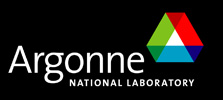Introduction to Crystallography
This web page contains 15 lectures and handout notes given by Dr. Cora Lind for her Chem 4980/6850/8850: X-ray Crystallography course at the University of Toledo (Ohio). The preparation of these lectures was in part supported by National Science Foundation CAREER award DMR-0545517. Thanks to Prof. Lind and the University of Toledo Department of Chemistry for permission to post these videos and notes.
All lecture notes are in PDF format.-
Lecture 1: Introduction
Slides: Introduction [condensed version]
This lecture introduces crystallography, including the history and generation of x-rays. (Note that refractive optics for x-rays are used at the APS, in contrast to what is mentioned in the lecture). -
Lecture 2: Crystals
Slides: Crystals [condensed version]
This lecture discusses what is a crystal, defines the concept of a unit cell and defines the seven classes of unit cells. Growth of crystals is also discussed. The sharp facets of crystals are determined by the underlying symmetry of the unit cell; these facets are described by Miller indices. -
Lectures 3 & 4: Symmetry and Point Groups
Slides: Symmetry [condensed version] | Point Groups [condensed version]
Lecture 3 relates the unit cell to the concept of the lattice and introduces the 14 Bravais lattice types. Then point symmetry elements -- the symmetry that can be found in discrete objects are introduced. Lecture 4 expands from symmetry of discrete objects to those of infinitely repeating patterns that fill space. This requires additional types of symmetry elements. Symmetry operations can be combined in a limited number of ways. For discrete objects there are 32 point groups, for infinite objects there are 230 space groups. -
Lecture 5: Plane and Space Groups
Slides: Plane and Space Groups
This talk provides an overview of space group symbols and then introduces how to read a space group description in the International Tables of Crystallography, volume A. The lecture ends with a description of sub- and super-group relationships. -
Lecture 6: Diffraction
This lecture introduces the basic physics of diffraction. Bragg's law, which relates diffraction to planes (of atoms) is shown and related to the concept of Miller indices, introduced earlier. -
Lecture 7: Reciprocal Space
Slides: Reciprocal Space [condensed version]
This lecture introduces the concept of the reciprocal lattice and how to relate this to the scattering from a crystal. -
Lecture 7 (continued): Reciprocal Space, End & Exercises
Continuation of the previous lecture, with a brief review and then covering the Ewald sphere concept, which allows one to visualize the geometry of diffraction. The formulae for computing the d-space using real and reciprocal lattice constants and ending with a contrast between single crystal and powder diffraction. The 2nd half of the lecture Prof. Lind reviews symmetry with the class, which may be of little value via video. -
Lecture 8: Structure Factors
Slides: Structure Factors [condensed version]
Structure factors provide both intensity and phases for the diffracted beams. This presentation shows how the structure factor equation arises from the positions of atoms in the unit cell. This equation is used to show how systematic absences occur, where classes of reflections are required to have zero intensity by symmetry. -
Lecture 9: Fourier Transforms
This lecture introduces the concept of the Fourier transform and shows how the the electron density in a unit cell is related to the Fourier transform of the structure factors, and the converse. -
Lecture 10: Data Collection
Slides: Data Collection [condensed version]
This lecture describes sources of x-rays and neutrons, and how diffraction intensities are collected. -
Lecture 11: Structure Solutions
These talks outline a number of approaches used for determining approximate crystal structures from a set of diffraction intensities (typically from single-crystal measurements). -
Lectures 12 & 13 Refinement and Interpretation
Slides: Refinement [condensed version] | Interpretation [condensed version]
Refinement takes an approximate set of atomic coordinates and finds the optimum model to fit the data. Least-squares minimization is introduced as a way to optimize fits. The lecture also discusses how one uses the fit model to derive results. -
Lecture 14: Rietveld
Slides: Rietveld [condensed version]
This lecture introduces the method that Hugo Rietveld introduced for the refinement of crystal structures from powder diffraction data, what sort of data are best for this and some of the software available. How to find common problems in fits from viewing patterns graphically is also shown. -
Lecture 15: Synchrotrons and Neutrons
The first part of this lecture explains that a synchrotron produces very intense x-ray beams with a wide range of accessible energy. This allows types of measurements that are not possible with lab-based equipment, such as high pressure diffraction and x-ray spectroscopies. The differences between neutron and x-ray scattering are presented, as well as some information about neutron sources.

